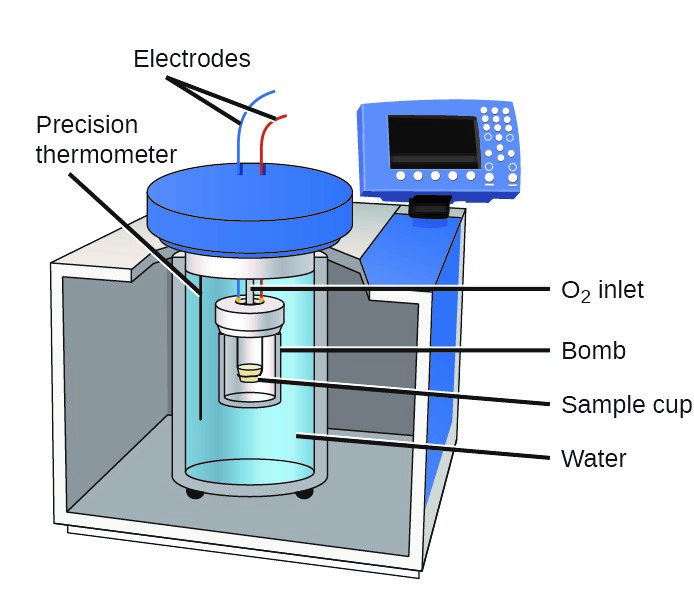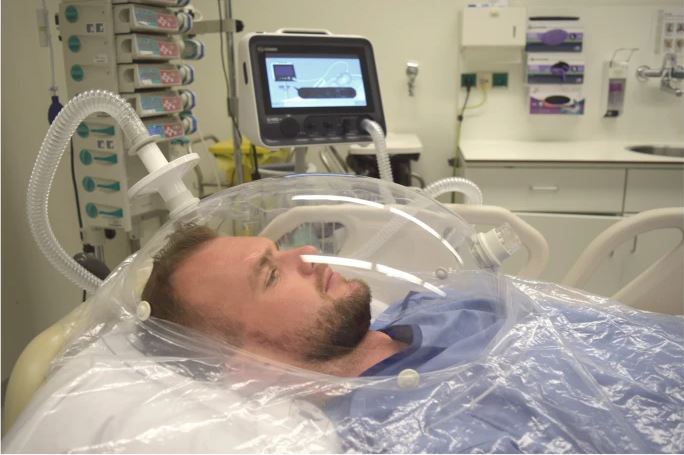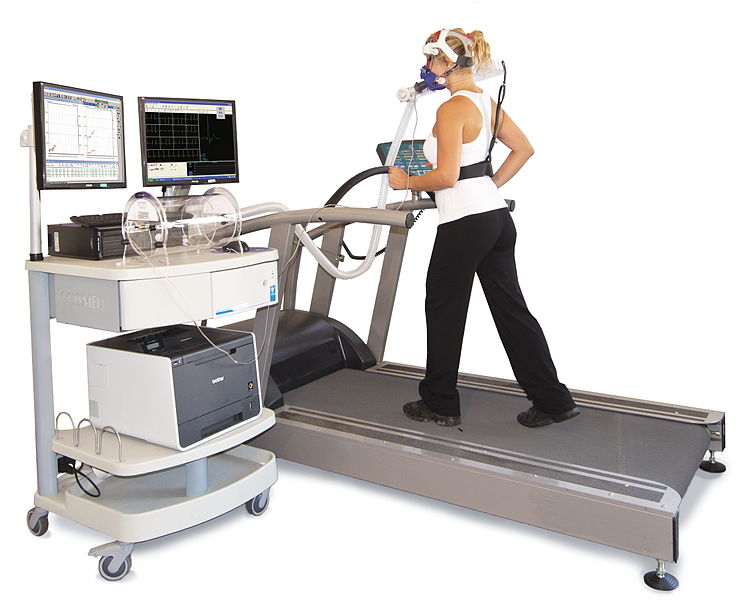3.1 Calorimetry
Calorimetry is defined as the measurement of heat or, we could say, the measurement of calories. There are two different methods of calorimetry; direct and indirect. Direct calorimetry is a direct measurement of heat production. When you exercise, you get warm and start to sweat. This is due to increased calorie burning that releases heat. Indirect calorimetry is a method of assessing how many calories were burned by measuring the uptake or consumption of oxygen. For each liter of oxygen consumed, an individual burns approximately 5 kcals. As you exercise, you might also notice that you get shortness of breath or start to breathe heavier. This is because you are burning more calories.
An example of direct calorimetry is a bomb calorimeter, a piece of equipment used to measure the heat energy (kcals) stored in food. In this piece of equipment, a food sample is placed in the sample cup. A current is sent down the electrodes and the food sample is combusted with oxygen in a reaction that produces heat. The thermometer measures how much heat was produced when the sample was ignited. The amount of heat produced can be measured directly and therefore this is a direct measurement of the energy in the food sample.
Figure 3.2 Bomb Calorimeter

When measuring the amount of energy a person expends at rest or doing various activities, metabolic measurement systems are often used. If heat is not directly being measured, the volume of oxygen that a person consumes at rest or during exercise can be measured. A metabolic measurement system is a piece of equipment that is attached to a person’s mouth and nose in order to measure the volume of oxygen that is consumed. As stated previously, for each liter of oxygen consumed a person burns approximately 5 kcals. Therefore, if someone consumes 100 liters of O2 while cycling on a stationary bike, we can calculate that they burned approximately 500 kcals. Because heat production was not measured directly, metabolic measurement systems are an example of indirect calorimetry. Figures 3.3 and 3.4 below show some examples of metabolic measurement systems. As you can see, these can be used at rest or while an individual is exercising. This is the method that is normally used to determine energy expenditure in humans. While it is often used in research settings, it is not practical for people to use on a daily basis. We will be using prediction equations derived from large scale research studies to estimate the number of kcals you burn on a daily basis later in this chapter.
Figure 3.3 Metabolic Measurement System Used in a Hospital Setting

Figure 3.4 Metabolic Measurement System Used During Exercise

Media Attributions
- Bomb Calorimeter © Open Stax is licensed under a CC BY (Attribution) license
- Indirect Calorimetry © Springer Nature is licensed under a CC BY (Attribution) license
- Indirect Calorimetry in Exercise Settings © Cosmed is licensed under a CC BY-SA (Attribution ShareAlike) license
